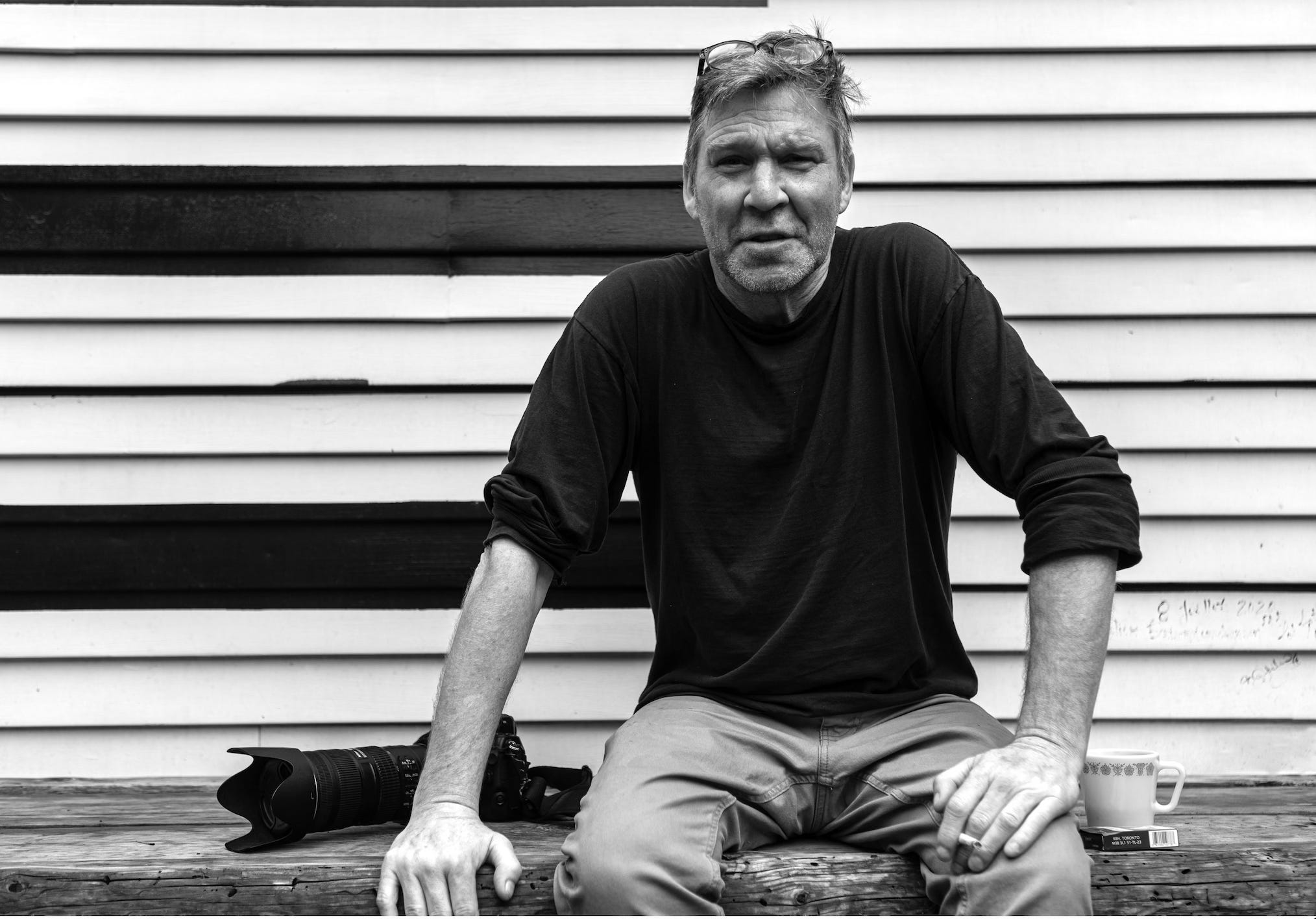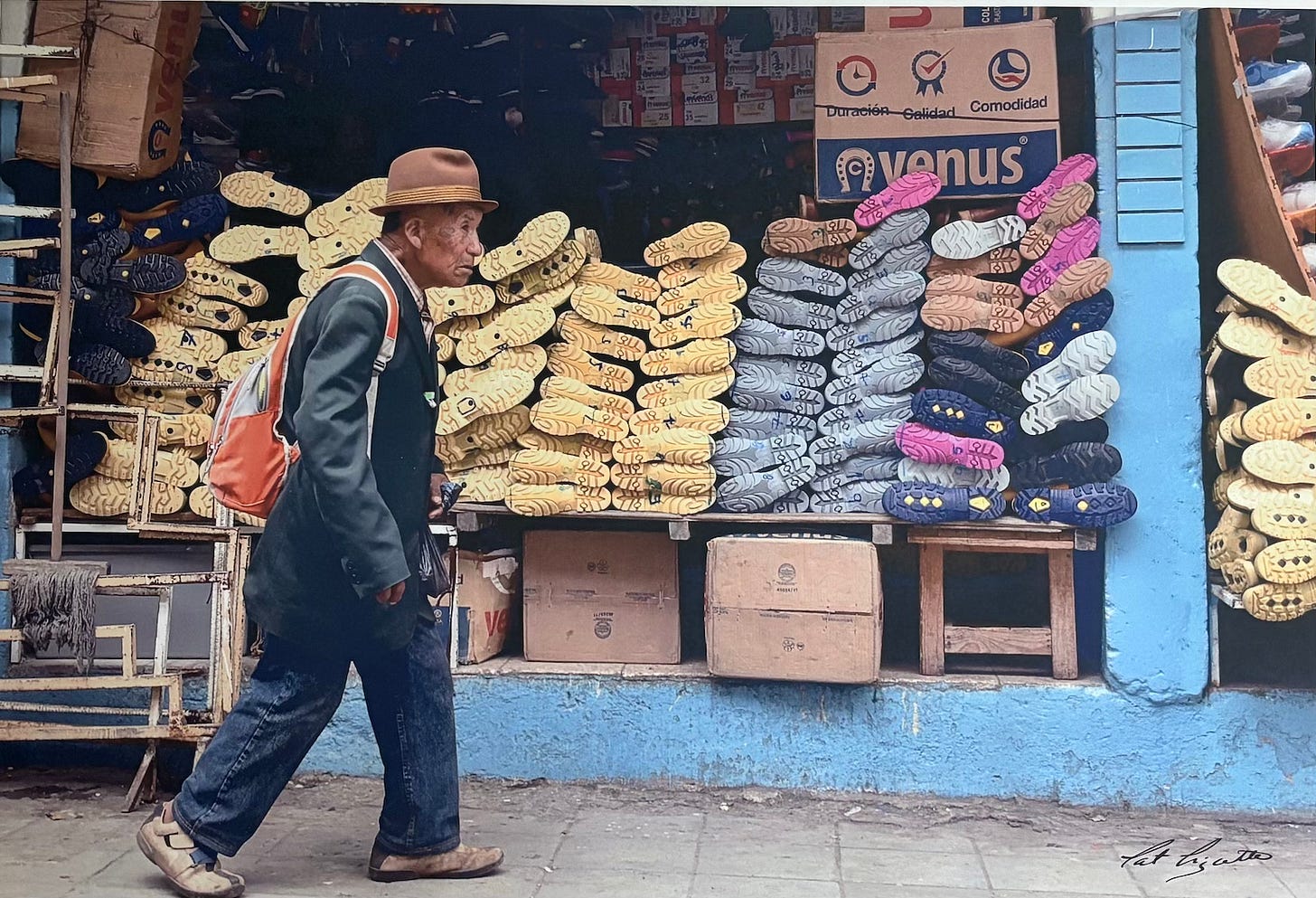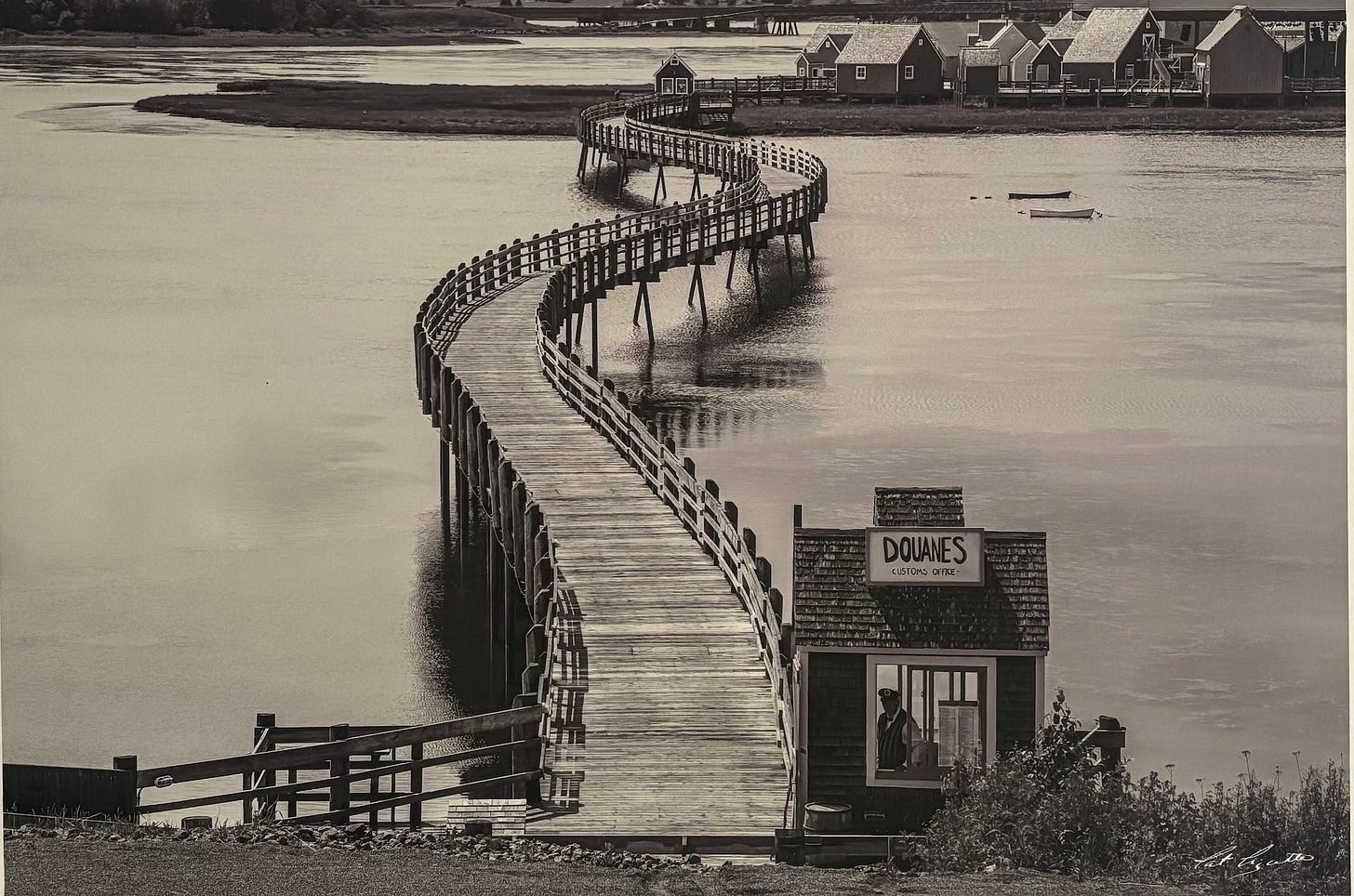Through the Lens (1): Patrick Lizotte, My Nunavut/Attraverso la lente (1): Patrick Lizotte, il mio Nunavut
A street photographer and his quest for humanity’s grandeur/Un fotografo di strada alla ricerca della grandezza dell’umanità
I’m not interested in the wealthy or the famous. I enjoy capturing images of young children and the elderly. I’m drawn to the two extremes: the innocence of childhood and the wisdom of old age

A resident of Trois-Rivières, Québec—the City of Poets (more on that soon)—Patrick Lizotte has chosen a camera over a pen to capture the essence of the human condition. An admirer of two masters—Oliviero Toscani (“A provocateur ”) and Sebastião Salgado (“He showed us real life”)—both known for their ability to deliver powerful messages through stark and arresting images—like many photographers Patrick began by traveling the world: across the Americas—North, Central, and South—with extended stints in Asia and Europe. “I even worked at an elephant camp in Thailand, taking photos and videos of tourists,” he recalls.

But nothing prepared him for the place that would leave the deepest mark on his work and worldview: Nunavut—the northernmost and most remote territory in Canada. “I called Iqaluit home from 2013 to 2016,” he says. “By far the most spectacular place I’ve ever lived—for photography, and not only for that.”
Q: It must have been a challenge to photograph the ice, the snow...
Lizotte: Yeah, it’s challenging—the sky is white, the ground is white. In any case, I mostly focused on people; they interest me far more than landscapes. At first, many were hesitant to be photographed. But once they saw my work and understood my intentions, everything changed. The local school hired me to shoot graduation portraits, which led to more contracts. I even worked as a set photographer on the film Iqaluit by Benoît Pilon, starring François Papineau. Eventually, I became known and recognized in the community, which allowed me to capture some truly powerful images.
Q: Which language would you speak to communicate?
Lizotte: They all speak English. Some of the older people who come from other communities might speak only Inuktitut, but most of the young people—and everyone up there is mostly young—speak English. There is also a small Francophone community.

Q: You also experienced Inuit life up close, participating in a beluga whale hunt…
Lizotte: Yes, I was invited by the father of a girl I was in contact with. We were heading out to fish in the Arctic Shire. Everything was calm and quiet at first. Then, all of a sudden, the walkie-talkies crackled to life—other boats began to converge. Someone had spotted a beluga. What started as a peaceful fishing trip quickly turned into a whale hunt. A shot was fired, the whale was harpooned, and it was towed ashore. Within 30 minutes, the entire animal had been shared—nothing was wasted. The spirit of sharing was extraordinary to witness. They offered me a piece to eat, as they do. But it’s raw—completely raw. Indeed, the original definition of ‘Eskimo’ is someone who eats raw meat. But they are so much more than that. The Inuit have a rich culture—drawing, sculpture, storytelling. They are a deeply artistic people.
Q.: But they have problems, too.
Lizotte: Yes, unfortunately, there are problems. In some communities, only about 400 people live there year-round, facing long, harsh winters. You can’t just hop in a car and leave if things get difficult—you’re essentially stuck there. It’s like being on an island: isolated, enclosed, cut off. And that isolation brings challenges—alcohol abuse, sexual abuse, a lack of essential resources. But despite it all, they are extraordinary people–kind, resilient. I loved my experience there, and I still miss it.
Q: What did those three and a half years living among them leave in you —personally, emotionally, even spiritually?
The feeling of brotherhood. The importance of helping one another. The spirit of family—they have an incredibly strong sense of it. It contrasts with the individualist tendency we have in modern Canada, which I believe doesn’t serve us. I came back changed, with a heightened awareness of the grandeur of the human race. We’re all the same species, just shaped by different contexts and ways of life. They also taught me resilience, a deeper appreciation for nature, and a renewed awareness of our responsibility to the planet.
Q: How was it coming back?
Lizotte: The culture shock was greater than anything I’d experienced abroad. My little hometown, Trois-Rivières, felt like New York—everything seemed rushed and cluttered. You know, over there, there are no traffic lights, no street names—it’s all one small village. And the landscape is immense, a desert of ice. You feel somewhat shielded from the world’s problems.
Q. Will you visit Nunavut again at some point?
Lizotte: I’m planning an exhibition of the pictures I took up there. It won’t happen anytime soon, as my prints are scattered here and there, and I’m a bit lazy when it comes to promoting myself. But I’d love to go back to Nunavut, see my friends again, and show them all the pictures I took of them.

Patrick Lizotte: Il mio Nunavut
Non mi interessano i ricchi o i famosi. I miei soggetti preferiti sono soprattutto bambini e anziani. Mi attraggono gli estremi: l’innocenza dell’infanzia e la saggezza della vecchiaia
Residente a Trois-Rivières, Québec – la Città dei Poeti (ne parleremo presto) – Patrick Lizotte ha scelto la macchina fotografica al posto della penna per raccontare l’essenza della condizione umana. Ammiratore di due maestri – Oliviero Toscani (“un provocatore”) e Sebastião Salgado (“Ci ha mostrato la vita vera”) – entrambi noti per la capacità di trasmettere messaggi potenti con immagini crude e folgoranti, Patrick ha iniziato come molti fotografi: viaggiando per il mondo, dalle Americhe – Nord, Centro e Sud – alle lunghe permanenze in Asia e in Europa. “Ho persino lavorato in un campo di elefanti in Thailandia, facendo foto e video ai turisti”, ricorda.
Ma niente lo aveva preparato al luogo che avrebbe lasciato un marchio indelebile sul suo lavoro e sul suo modo di guardare alla vita: il Nunavut – il territorio più a nord e più remoto del Canada. “Ho vissuto a Iqaluit dal 2013 al 2016,” racconta. “È di gran lunga il posto più spettacolare in cui io abbia mai vissuto – per la fotografia, ma non solo.”
D: Fotografare neve e ghiaccio non è semplice…
Lizotte: Sì, è complicato – il cielo è bianco, il suolo è bianco. Ma mi sono concentrato soprattutto sulle persone; mi interessano molto più dei paesaggi. All’inizio, molti erano restii a farsi fotografare. Ma una volta visto il mio lavoro e comprese le mie intenzioni, tutto è cambiato. La scuola del posto mi ha ingaggiato per realizzare i ritratti di laurea, e da lì sono arrivati altri incarichi. Ho anche lavorato come fotografo di scena per il film Iqaluit di Benoît Pilon, con François Papineau. Alla fine, sono diventato una figura conosciuta e riconosciuta nella comunità, il che mi ha permesso di scattare immagini davvero potenti.

D: E come comunicavi con loro? In che lingua?
Lizotte: Tutti parlano inglese. Alcuni anziani provenienti da altre comunità parlano solo inuktitut, ma la maggior parte dei giovani – e lì sono quasi tutti giovani – parla inglese. C’è anche una piccola comunità francofona.
D: Ci dicevi di aver partecipato a una battuta di caccia alla balena beluga…
Lizotte: Sì, fui invitato dal padre di una ragazza con cui ero in contatto. L’idea era di andare a pescare nell’Artico. All’inizio tutto era tranquillo. Poi, all’improvviso, le radio hanno cominciato a gracchiare – altre barche si sono avvicinate. Qualcuno aveva avvistato una beluga. Quella che era iniziata come una pacifica uscita di pesca si è trasformata in una caccia alla balena. Un colpo di arpione e la balena è stata presa e trainata a riva. Nel giro di 30 minuti l’animale era stato spartito interamente – nulla è andato sprecato. Lo spirito di condivisione era straordinario. Mi hanno offerto un pezzo da mangiare, come fanno tra loro. Cruda, completamente cruda! In effetti, la definizione originaria di “eschimese” è “colui che mangia carne cruda”. Ma sono molto più di questo. La cultura Inuit è ricchissima – disegno, scultura, narrazione. Sono un popolo profondamente artistico.
D: Ma ci sono anche dei problemi…
Lizotte: Sì, purtroppo. In alcune comunità vivono solo circa 400 persone tutto l’anno, affrontando inverni lunghi e durissimi. Se le cose si mettono male, non puoi semplicemente prendere l’auto e andartene – sei essenzialmente bloccato lì. È come vivere su un’isola: isolamento, convivenza forzata, chiusura. E quest’isolamento comporta diverse criticità – alcolismo, abusi sessuali, mancanza di risorse essenziali. Ma restano un popolo straordinario – gentili, resilienti. La mia esperienza lì mi è rimasta scolpita nel cuore e ancor oggi ne ho nostalgia.

D: Cosa ti ha lasciato questa convivenza di tre anni e mezzo?
Lizotte: Il senso di fratellanza. L’importanza di aiutarsi a vicenda. Lo spirito di famiglia – hanno un senso della comunità incredibilmente forte. Opposto alla tendenza individualista che abbiamo nel Canada moderno, una tendenza che credo non ci faccia bene. Sono tornato cambiato, con una maggiore consapevolezza della grandezza del genere umano. Siamo tutti lo stesso animale, solo modellati da contesti e modi di vita diversi. Da loro ho imparato la resilienza, un apprezzamento più profondo per la natura e una consapevolezza rinnovata della nostra responsabilità verso il pianeta.
D: E il rientro com’è stato?
Lizotte: Lo shock culturale è stato più forte di qualsiasi altro vissuto all’estero. La mia piccola città natale, Trois-Rivières, mi sembrava New York – tutto appariva frenetico, caotico. Laggiù non ci sono semafori, né nomi delle strade – è tutto un unico piccolo villaggio. E il paesaggio è immenso, un deserto di ghiaccio. Ti senti così lontano e quasi protetto dai problemi del mondo.
D: Hai intenzione di tornare in Nunavut?
Lizotte: Sto preparando una mostra con le foto che ho scattato lì. Ci vorrà del tempo, anche perché le stampe sono sparse un po’ qua e là, e ammetto di essere un po’ pigro quando si tratta di promuovermi. Ma mi piacerebbe davvero tornare in Nunavut, rivedere i miei amici e mostrare loro tutte le foto che ho fatto.





